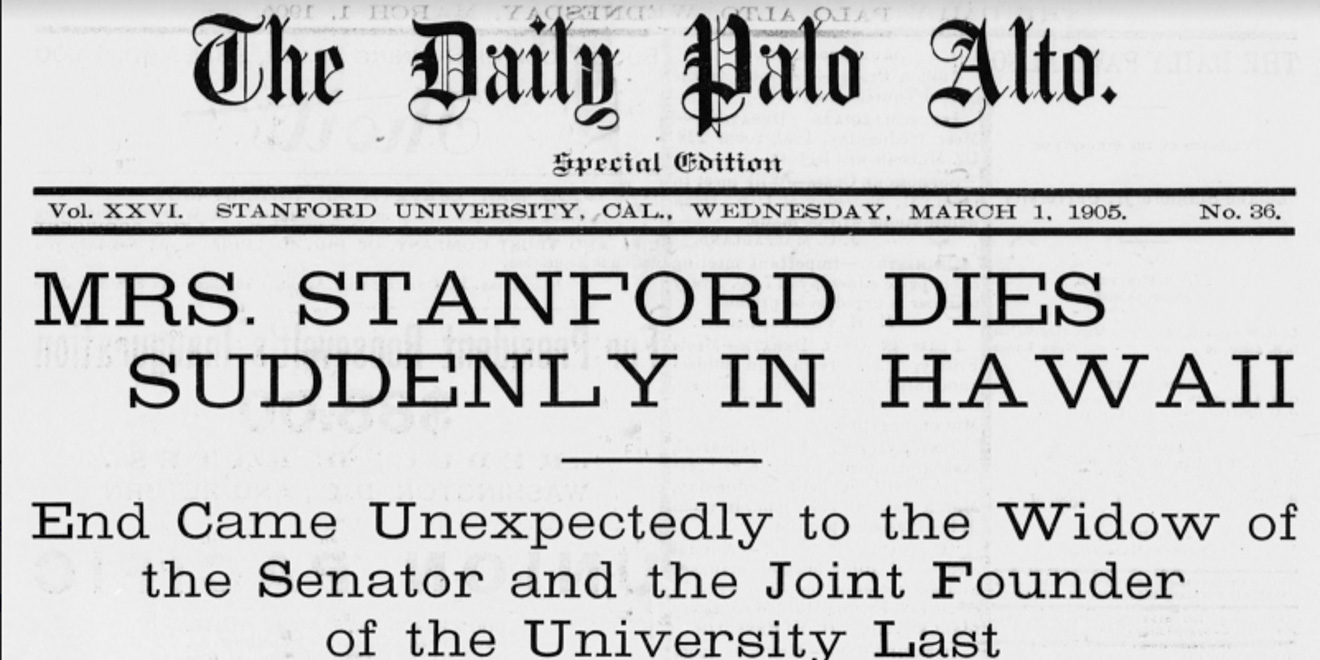The feature “On this day in Stanford history” details events that occurred on the same date in past years at Stanford.
According to The Stanford Daily’s archives, on Mar. 1 in….
1901: The members of the Bubonic Plague Commission visited Stanford at the invitation of the University’s first president, David Starr Jordan. The three-man group was initially convened by U.S. President William McKinley to investigate plague outbreaks in Chinatown in San Francisco.
1905: “MRS. STANFORD DIES SUDDENLY IN HAWAII,” the front page of the paper announced in all capital letters. Jane Stanford, one of the founders of the University, had passed away the night prior in Honolulu. The article noted that, according to the best available information at the time, the presumed cause was pneumonia; however, strychnine poison was later determined to have been the actual cause, with murder suspected to this day.
1928: The Daily reported that Armando Diaz, who was commander-in-chief of Italian forces during “the World War,” had passed away in Rome.
1943: Stanford’s debate team broke a losing streak against the San Quentin State Prison “inmate team” with a tie. Because the judges were other, non-competing inmates — who the Daily said had “natural prejudice ” — the victory was hailed as particularly impressive.
1944: Back-to-back Daily headlines announce that “Yanks Stop Nazi Push” and “[Japanese soldiers] in Burma Suffer.”
1957: The Daily reported on plans to build a “multi-billion electronvolt linear accelerator about two miles long in the foothills.” Construction of the Stanford Linear Accelerator Center, or SLAC, would begin in 1962.
1961: An editorial entitled “Trimester Plan May Revolutionize Academic System” discussed the potential implications of splitting the academic year into thirds, with the author suggesting that it could enable students to earn a bachelor’s degree in less than three years.
1977: “Will Title IX bring sororities?” a front-page article asks.
1989: The Daily reported on an announcement by the Student Conduct Legislative Council that “some forms of expression can . . . constitute violations of the Fundamental Standard.”
2012: The Occupy Stanford group, which had been “[keeping] vigil” in Meyer Library for several months, prepared to present an open letter at the next day’s Occupy Education California rally — an offshoot of the larger Occupy Wall Street movement.
Contact Brian Contreras at brianc42 ‘at’ stanford.edu.
